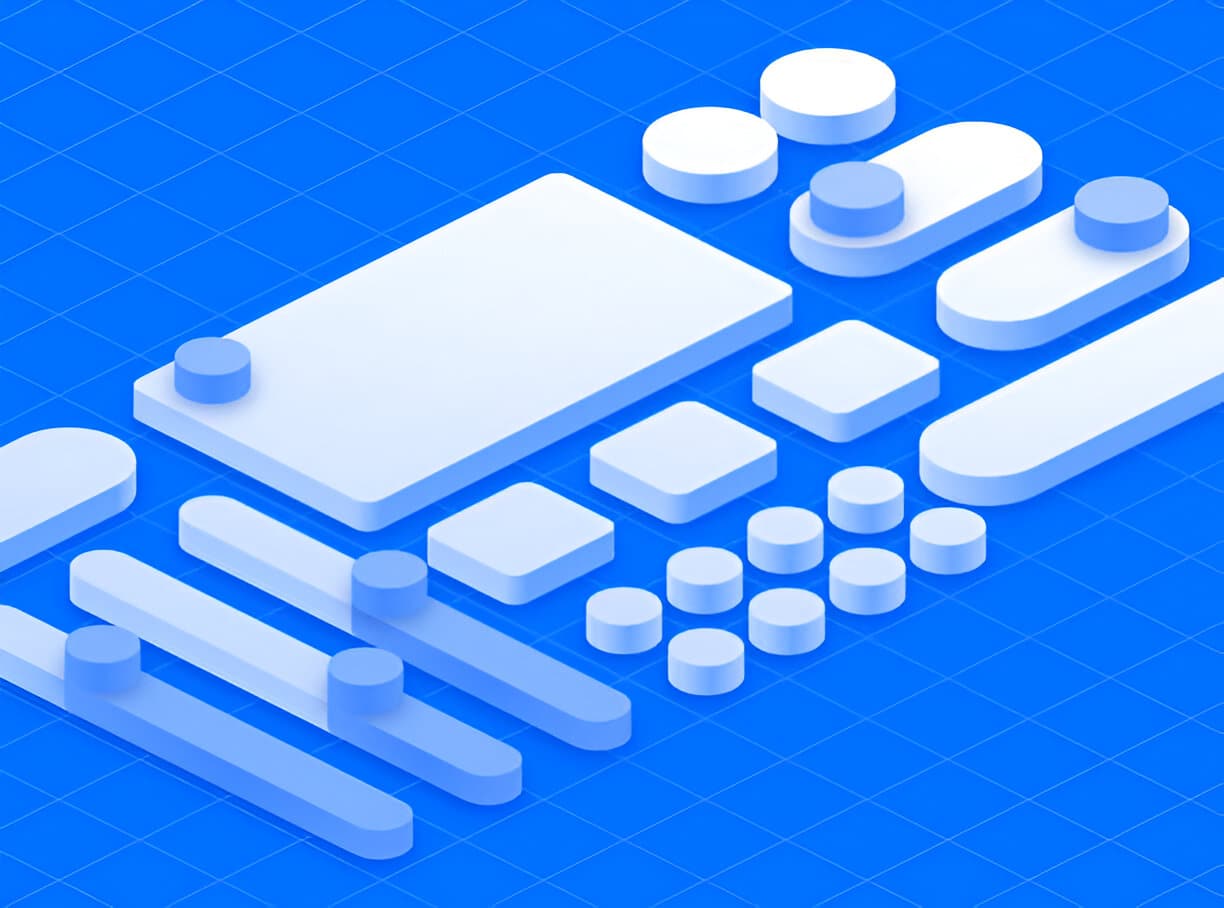Every growing product faces the same challenge: inconsistent UI, duplicated code and design chaos. One team builds a button one way, another team builds it differently.
Before you know it, your app looks like a patchwork of mismatched components.
Table of contents
What is a Design System?
A design system is a collection of reusable components, design principles, and guidelines that help teams build consistent and scalable user interfaces.
It serves as a single source of truth for both designers and developers.
Key Elements of a Design System
Design Tokens
The smallest reusable design properties, such as colors, typography, spacing, and shadows. Instead of hardcoding #FF5733 as a color, you define primary-color and apply it everywhere.
Component Library
A set of reusable UI elements like buttons, forms and modals that adhere to design and accessibility standards.
And to enforce design standards in code, we need a front-end framework (React, Angular, Vue, etc.).
Documentation
Usage instructions, design principles, and accessibility rules to ensure consistency.
How It Works in Practice
Imagine you work at a company with multiple teams working on a single product.
Instead of every team creating their own version of a “Submit” button with slightly different padding, font sizes, and colors, you define a standard button component in your design system.
This button is:
- Styled according to brand guidelines.
- Accessible by default (keyboard navigation, proper contrast, etc.).
- Easily updated — fix it once, and every instance updates automatically.
Why Do Companies Use Design Systems?
The world’s leading companies — Google, Airbnb, IBM, and Microsoft — all use design systems to scale their products.
Here’s why:
Scalability for Large Teams
As products grow, maintaining UI consistency becomes harder.
A design system provides a structured foundation that scales.
Faster Development
Developers don’t have to reinvent the wheel every time they build a new feature.
With a component library, they can reuse existing components, reducing development time significantly.
Consistent UI
A design system ensures that every product maintains a cohesive look and feel.
Without one, different teams may implement slightly different versions of the same components.
Improved Collaboration
Designers define the system.
Developers implement it.
Everyone works from a shared set of rules rather than treating design and development as separate silos.
Accessibility and Usability Standards
All users, including those with disabilities, should be able to use the product effectively.
A design system integrates accessibility best practices into the components from the start.
Design System Examples
These are some of the great examples of solid design systems that power thousands of apps:
- Google’s Material Design
- IBM’s Carbon
- Microsoft’s Fluent
- Atlassian Design
Google created Material Design as a design system to unify the user experience across Android, web, and mobile apps.
It includes everything from typography guidelines to pre-built UI components.
Result? Hundreds of apps now have a consistent and user-friendly UI.
How to Build a Design System
Creating a design system isn’t an overnight task. Here’s a simplified roadmap to get started:
Step 1: Audit Your Existing UI
- Identify inconsistencies in design and code.
- Take inventory of UI components used across your product.
Step 2: Define Design Tokens
- Establish a set of global styles for colors, typography, spacing, and shadows.
- Use a tool like Style Dictionary or CSS variables to manage tokens.
Step 3: Create a Component Library
- Build and document reusable UI components using Storybook.
- Ensure each component meets accessibility standards (ARIA roles, keyboard navigation, etc.).
Step 4: Document Everything
- Write clear usage guidelines for each component.
- Explain when and how components should be used.
- Provide code snippets and design mocks.
Step 5: Adopt a Versioning Strategy
- Use Semantic Versioning (SemVer) to track updates.
- Assign ownership — who maintains the design system?
- Schedule regular audits to ensure it stays relevant.
Common Challenges (and How to Overcome Them)
Even the best design systems face hurdles. Here’s how to tackle them:
“Teams resist adoption.”
💡 Solution: Educate stakeholders on the time saved by using pre-built components. Offer workshops or demos.
“Keeping the system updated is hard.”
💡 Solution: Assign a dedicated design system team responsible for maintenance and updates.
“One-size-fits-all doesn’t work.”
💡 Solution: Allow for controlled flexibility. Some components may need customisation per product.
Conclusion
If your product is growing without a design system, you’re setting yourself up for technical debt and UI inconsistency.
A well-structured design system helps teams move faster, collaborate better, and ship high-quality, scalable UI.
Whether you’re a designer, developer, or product manager, investing in a design system will make your workflow smoother and more efficient.


